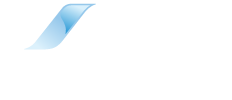Establish a Cleaning Protocol
The Institute for Environmental Sciences preferred Cleanroom cleaning Protocol can be summed up in three words: Vacuum, Wipe, Vacuum.
Vacuuming or tack rolling should be used to pull loose particles from surfaces.
Wiping provides mechanical energy to remove more tightly bound particles and cleaning solutions break the surface tensions
The second vacuuming removes loosened particles and cleaner residues. It is a method tested over time to be most reliable and can be applied to most general Cleanroom cleaning applications.
Step 1 - Ceiling Panels
- Vacuum with a soft brush attachment.
- Wipe gently in a single direction using slightly overlapping strokes.
- Tack roll in a single direction, again using slightly overlapping strokes.
- Remove spots with a commercial cleaner, DI water and a polyester wiper.
- Vacuum with a soft brush attachment.
Step 2 - Light Fixtures
- Vacuum horizontal surfaces with a soft brush attachment.
- Wipe surfaces of egg crate light diffusers with a woven polyester wipe dampened with DI water.
- Open unit. Wipe bulbs. Vacuum horizontal surfaces with soft brush attachment.
- Close unit. Wipe trim pieces.
Step 3 - HEPA Filters
- Use extreme caution not to contact HEPA filter.
- Vacuum with a soft brush attachment.
- Wipe horizontal surfaces of egg crate diffusers with a woven polyester wipe dampened with DI water.
- Vacuum with a soft brush attachment. Wipe trim pieces.
Step 4 - Sprinkler Heads
- Gently wipe exposed surfaces only with a woven polyester wipe dampened with DI water.
- Use extreme caution not to activate.
Step 5 – Walls
- Vacuum with a soft brush attachment.
- Wipe with a woven polyester wipe dampened in a 16:1 solution of DI water and a commercial cleaning detergent.
- Wipe in one direction only using slight overlapping strokes.
- Mop entire surface with a commercial wall cleaning system.
- Mop from top to bottom using slightly overlapping strokes.
- Use a minimum of liquid to avoid splashing or dripping
- Tack roll from top to bottom.
- Remove spots with a commercial cleaner and woven polyester wipe.
- Vacuum with a soft brush attachment.
Step 6 - Glass Surfaces
- Squirt commercial glass cleaner on woven polyester wipe.
- Apply to surface with a dampened wipe. Squeegee (from top to bottom if on a vertical surface) to remove excess liquid.
- Wipe with a dry woven polyester wipe.
Step 7 - Piping & Process Equipment
- Consult with a process engineer; group leader or equipment operator prior to cleaning any process equipment.
- Clean only exterior surfaces. Do not clean in or near processing areas.
- Use wipes damped with solution of IPA and commercial cleansers.
- First vacuum with a soft brush attachment.
- Wipe top to bottom whenever possible, using slightly overlapping strokes.
- Use a minimum of liquid on wipes.
- Wipe from top to bottom and avoid any splashing or dripping of cleaning solution.
- Vacuum with a soft brush attachment.
Step 8 – Floors
- Vacuum surface.
- Wash floor with a 16:1 solution of DI water and a floor cleanser using a clean, non-contaminating mop head.
- Rinse with DI water and a new, clean non-particulating mop head.
- The rinse water should be left on the floor long enough too completely saturate any film build-up.
- Then the rinse water should be mopped up, making sure to change the water after mopping every 10 to 15 square feet of floor surface.
- The water change is critical to the operation.
- Failure to change the water on a regular basis can lead to cross contamination, dragging potentially damaging contamination from one area to the next.
- After the floor is dry, it should be vacuumed.

